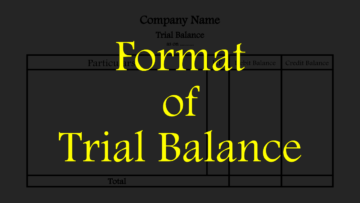There are many transactions every day in business and all those transactions are also managed. Small businesses can manage transactions with the help of journals and ledgers, but in large businesses, it is difficult to manage transactions with the help of journals and ledgers, that is why different books are maintained for different natures of transactions, like Cash Book, Sale Book, Purchase Book, etc. With their help, it becomes easier to manage transactions.
By keeping separate books does not require the process of journal and ledger, but their rules apply here too like debit and credit, “To” and “By” etc. Transactions in these books are recorded directly from the source document. Due to not keeping a journal, the narration of transactions is done in these books.

Table of Contents
What is a Cash Book?
Cash book is a separate book used to record cash and bank transactions at one place. Cash and bank being assets, the rule of real account applies in the cash book, due to which all transactions received in cash and bank are recorded with “To” on the debit side and all transactions paid through cash and bank are recorded with “By” on the credit side.
In the cash book all the transactions are recorded systematically, and all the transactions are recorded directly from the original source documents like cash purchases, cash sales etc. Businesses that conduct small numbers of transactions make less use of cash books because they manage transactions through journal and ledger.
To better manage cash and bank transactions, the cash book is divided into four parts: single-column cash book, double-column cash book, triple-column cash book and petty cash book.
Note: Due to the use of technology in accounting, manual tasks are decreasing.
Features of Cash Book
Following are the features of cash book:
1. Cash and Bank Only:
Only cash and bank related transactions are recorded in the cash book because this book is made to record only cash and bank related transactions. For example, purchases and sales made through cash and bank, payments made through cash and bank, etc.
2. It is both:
Cash book plays the role of both journal and ledger because if it is maintained then there is no need to maintain journal and ledger. Although journal and ledger are not maintained, their rules apply here also. Like debit and credit rules, “To” and “By”, etc.
3. Debit and Credit:
All transactions received in cash and bank are recorded on the debit side of the cash book and all transactions paid through cash and bank are recorded on the credit side of the cash book. For example, cash sales are recorded on the debit side and cash purchases are recorded on the credit side.
4. To and By:
All transactions on the debit side of the cash book are recorded with “To” and all transactions on the credit side are recorded with “By”. This is done because the credited account is written on the debit side and the debited account is written on the credit side.
5. Chronologically:
In the cash book, all the transactions are recorded chronologically because in this the transactions are recorded on a daily basis in a sequential manner.
6. Double Entry System:
Double entry system is followed in cash book because all the transactions in cash book are recorded on the basis of double entry system. Double entry system means debit and credit, according to which each transaction is divided into debit and credit.
Read Also:
QNA/FAQ
Q1. What is a Cash Book?
Ans: Cash book is a separate book used to record cash and bank transactions at one place.
Q2. Write the features of cash book.
Ans: Following are the features of cash book:
1. Cash and Bank Only
2. It is both
3. Debit and Credit
4. To and By
5. Chronologically
6. Double Entry System













